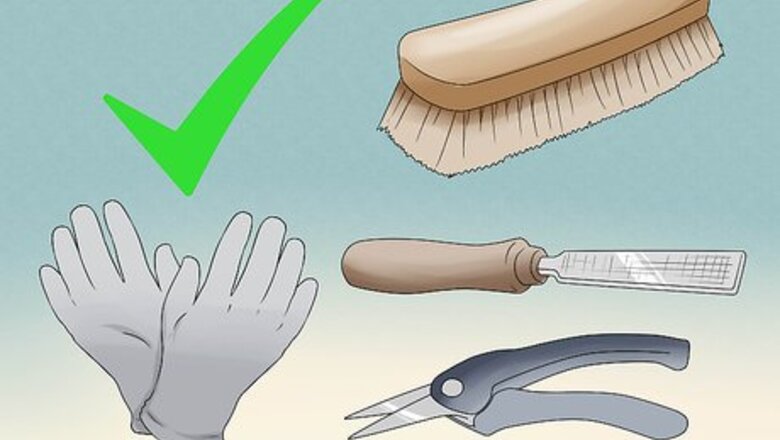
views
Getting Your Goat Ready
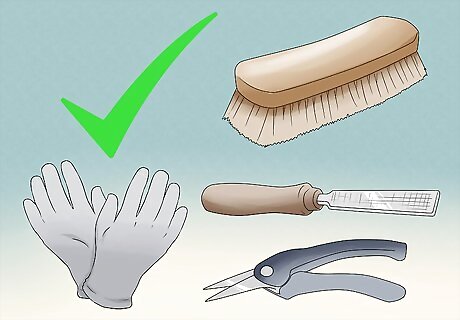
Gather your materials. Before you begin the trimming process, make sure you have all your materials ready. Goats may dislike having their hooves trimmed. It may be difficult to grab brushes and clippers if your goat is agitated. You will need a brush to dust off the goat's foot before trimming. You will also need a rasp to flatten out the hooves so they're level to the ground. You will need gloves to handle the goat's hooves. Goats feet can get messy. You will need two different types of clippers: hoof shears and a hoof knife. Both should be sharpened. While optional, it's a good idea to have blood stop powder. If you accidentally cut too deep, your goat's hoof may bleed slightly and require treatment.
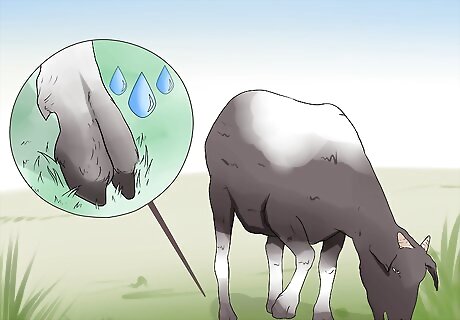
Soften the hooves. It's much easier to trim a goat's hooves when they're soft. If possible, trim your goat's hooves after a rain or snow fall. Rain and snow naturally soften a goat's hooves. If you live in an area where rain or snow is unlikely, try dampening some grass with a hose. Allow your goats to play in this portion of the yard.
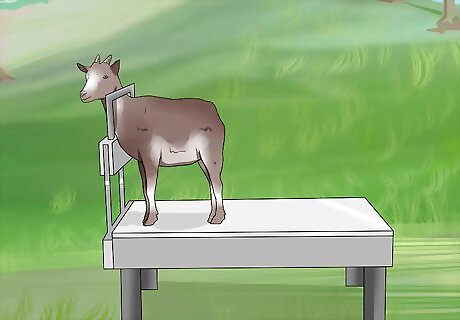
Restrain the goat. To begin the trimming process, you will first need to restrain your goat. How you choose to restrain your goat depends on his temperament. You can place your goat on a milking stand if he's generally docile and unlikely to kick or fall off. This makes it easier to reach your goat's hooves. If your goat is fidgety or you don’t have a milking stand, tie your goat to a post or fence. It may be helpful to have someone hold your goat.
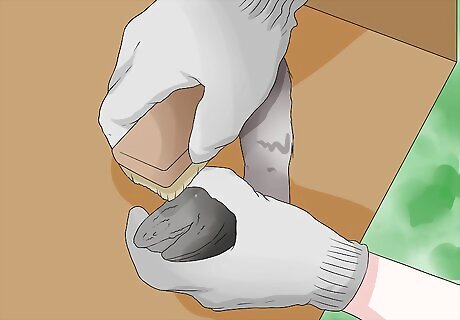
Clean the hooves. Once your goat is adequately restrained, you should clean his hooves. It can be hard to tell where to trim if your goat's hooves are covered in dirt and grime. Use your brush to dust any dirt off the exterior of the hooves. Any manure, dirt, or grime should be removed regularly. Next, lift each hoof up and pick out any rocks, dirt, and mud trapped inside the hoof. It's vital to remove such debris as such materials can obscure your vision.
Trimming the Hoof
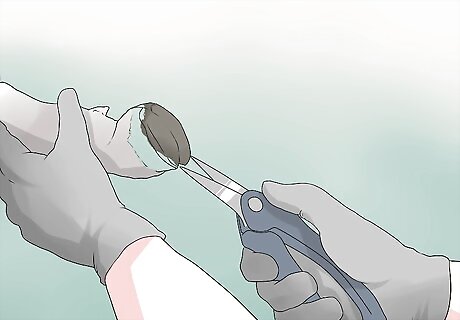
Nip away the front nail. Once you've cleaned your goat's hooves, you can begin the trimming process. Start with the front of the nail, using your hoof shears to trim. Goats nails become overgrown easily when they're kept domestically. In the wild, their feet would get worn down by climbing and jumping. Clip at the tip of the front nails. Keep clipping until you see a white surface emerge. Do not clip further than this. If you clip into a pink surface, this can make your goat bleed. Try to clip in a straight line. You want your goat's hooves to be level to the ground.
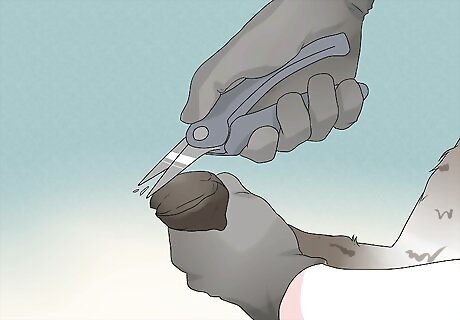
Cut along the sides of the nail. Once you've clipped the front nails, move on to the sides of the nails. Keep using the hoof shears. Goats have two toes on each foot, as well as two heels on each toe. Clip on the sides around these toes, once again clipping until you reach the white part of the hoof. Clip around the heel as well.
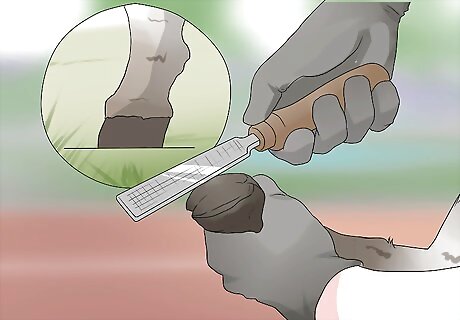
Level the bottom of the hoof. Remember, you want your goat's hooves to be level with the ground. This helps your goat walk smoothly. Now, you'll be using your rasp or knife to level the bottom of the hoof. If you use a knife, move from the toe to the heel. If you use a rasp, move from the heel to the toe. Use multiple strokes, trimming off a thin layer with each stroke. Keep trimming until the goat's hooves are flat and level with the ground. Stop if you’re trimming and you start to see pink.
Addressing Problems
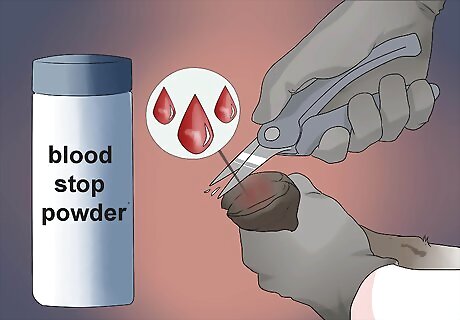
Use blood stop powder, if necessary. If you move slowly and avoid trimming into the pink, your goat should not bleed during the trimming process. However, everyone slips up on occasion. If you do end up causing droplets of blood to appear, applying blood stop powder can help correct the problem. You can sprinkle some powder on the infected area to help stop the bleeding. Read the instructions on your packet before use to make sure there are no warnings or special considerations relevant to your goat's issues.
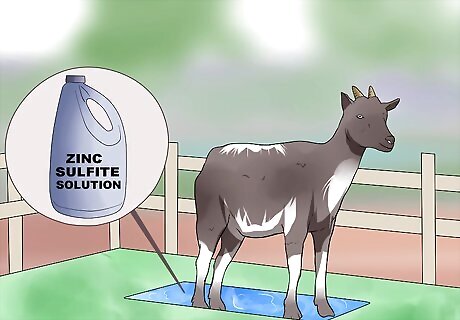
Prevent hoof problems with foot baths. Try installing a walk through bath in your goat's pen. This can allow your goat to wet his feet regularly, preventing a buildup of bacteria that can cause a condition known as foot rot. Foot rot eats away at a goat's hooves and must be treated with trimming and antibiotics. You can add copper or zinc sulfite to your foot bath. These chemicals help fight bacteria that can cause foot rot.
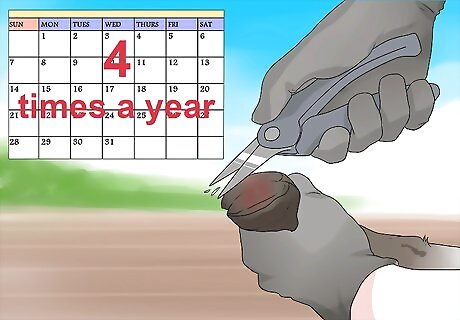
Trim regularly. A good way to prevent foot rot and infections is trimming your goat's feet regularly. You should seek to trim at least four times a year. However, it does depend on the individual animal. Some goat's feet may grow more quickly. Keep an eye your goat's feet and if you notice the hooves look a bit overgrown, schedule a trimming session. In the wild, goat's feet are worn down by rocks and terrain. Providing a large rock for your goat to play on can cut back on the need for trimming.



















Comments
0 comment